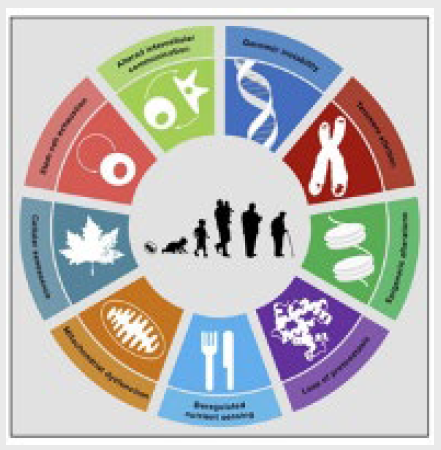
BIOGERONTOLOGY |
|||||||
| Aging is a physiological, multifactorial process characterized by a progressive loss of function, leading to increased risk of morbidity and mortality. | |||||||
|
Despite human life expectancy has significantly increased, the extension of the health span remains an open issue as well as the main goal of the gerontologic/geriatric research |
 |
||||||
|
|||||||
 |
CELLULAR SENESCENCE |
|
Cellular senescence is a mechanism of response to oxidative, replicative, oncogenic and other types of stress. It has a fundamental physiological role in tumour protection and tissue regeneration. However, it is also one of the best-known hallmarks of aging because the excessive accumulation of senescent cells occurring with time converts the original physiological role into a pathological one. Thanks to the use of preclinical models especially, in which it is possible to selectively eliminate the excessive accumulation of senescent cells, it has been shown that such removal can be beneficial in atherosclerosis, sarcopenia, osteoporosis, arthrosis, reduction of recurrences after chemotherapy and many other pathological conditions associated with aging such as frailty. This knowledge has opened the perspective of being able to intervene simultaneously in many conditions of the elderly using drugs capable of selectively removing senescent cells. |
GENETICS AND EPIGENETICS OF AGING |
| The genetic background we inherit from our parents (e.g., specific polymorphisms or alleles) and the epigenetic changes it undergoes because of internal and external stimuli (e.g., DNA methylation, histone modification, transcriptional regulation by microRNA) deeply influence our aging trajectory. The genotype is fixed, but the epigenetic profile is not. Thus, the identification of the pathways linking the epigenetic pattern and life span can support the implementation of ad hoc experimental protocols acting not on longevity per se but on health and wellbeing IRCCS INRCA is committed to analyse the involvement of epigenetic changes in the onset and progression of various age-related diseases (e.g., cancer and cardiovascular disorders) as well as the possible, protective role of a healthy lifestyle (e.g., physical exercise, nutrition, cognitively stimulating leisure activities) |
AGING AND AGE-RELATED DISEASE BIOMARKERS |
|
A biomarker is a molecule easy to assay (no time- and cost-consuming), detectable in a biological matrix that can be sampled in a non-invasive way, able to mirror the changes of an organ or a system. Such molecules are pivotal targets for both aging and age-related diseases research. Indeed, chronological and biological aging do not overlap: the discovery of one or more biomarkers able to define biological aging is considered one of the most important breakthroughs in the gerontological field. Likewise, diagnostic, prognostic and therapies follow-up biomarkers can significantly improve the geriatric patient management and promote a more individually tailored medicine |
 IRCCS INRCA
IRCCS INRCA